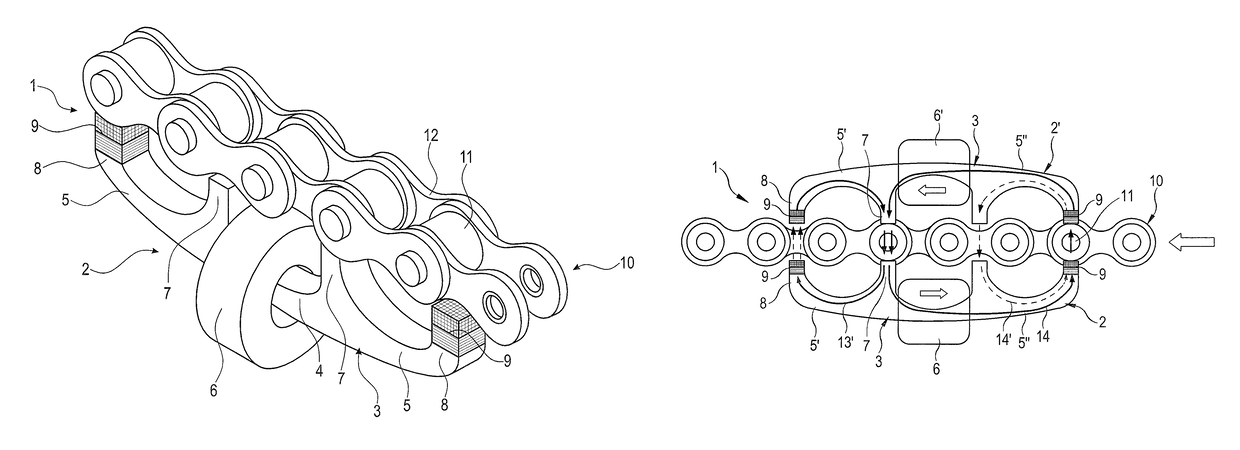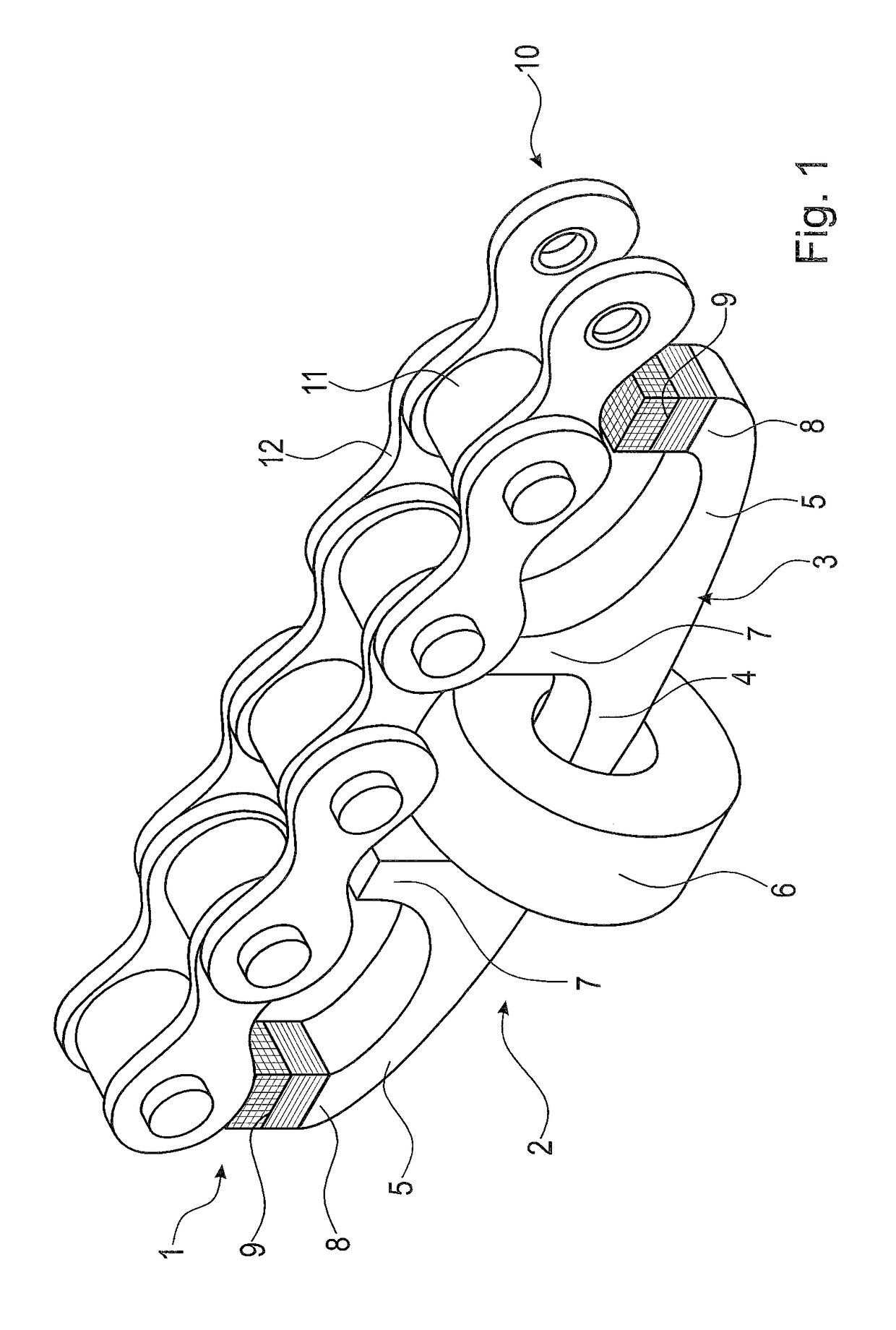Reluctance chain sensor and method of measuring the chain elongation
a technology of resistance chain and elongation, which is applied in the field of resistance chain sensor and the field of chain elongation, can solve the problems of inability to predict the failure the wear of the drive chain, and the operation of the drive unit,
- Summary
- Abstract
- Description
- Claims
- Application Information
AI Technical Summary
Benefits of technology
Problems solved by technology
Method used
Image
Examples
Embodiment Construction
[0047]FIG. 1 shows a schematic representation of a chain sensor 1 according to the present invention with a first reluctance sensor 2 in a perspective view. The reluctance sensor 2 comprises a yoke body 3 consisting of a material that is magnetically conductive, i.e. permeable to magnetic fields, said yoke body 3 comprising in addition to a central leg 4 also two yoke legs 5 extending laterally of the central leg 4. The central leg 4 has arranged thereon a coil 6, which may extend over the entire length of the central leg 4 between the inner teeth 7 of the adjoining yoke legs 5. The yoke legs 5 have, in addition to the inner teeth 7 adjoining the central leg 4, also outer teeth 8 which are arranged on the respective outer ends of the yoke legs. The inner teeth 7 and the outer teeth 8 project relative to a central area of the yoke legs 5 in the direction of an articulated chain 10 so that a cavity is defined between the inner teeth 7 and the outer teeth 8 of the yoke legs 5 and the a...
PUM
 Login to View More
Login to View More Abstract
Description
Claims
Application Information
 Login to View More
Login to View More - R&D
- Intellectual Property
- Life Sciences
- Materials
- Tech Scout
- Unparalleled Data Quality
- Higher Quality Content
- 60% Fewer Hallucinations
Browse by: Latest US Patents, China's latest patents, Technical Efficacy Thesaurus, Application Domain, Technology Topic, Popular Technical Reports.
© 2025 PatSnap. All rights reserved.Legal|Privacy policy|Modern Slavery Act Transparency Statement|Sitemap|About US| Contact US: help@patsnap.com



